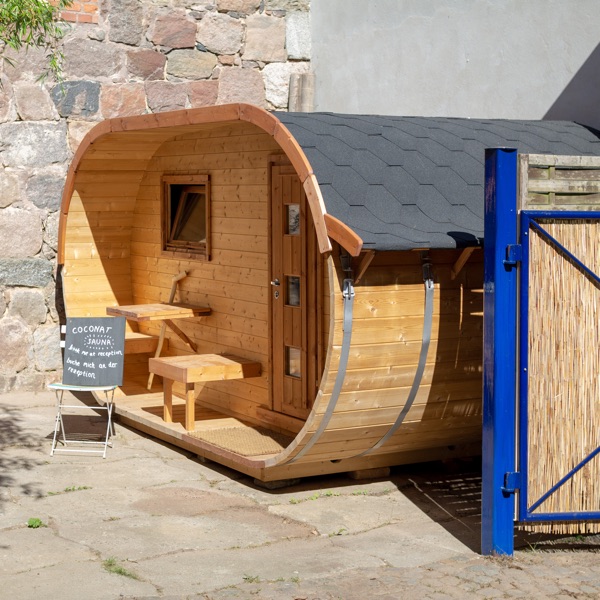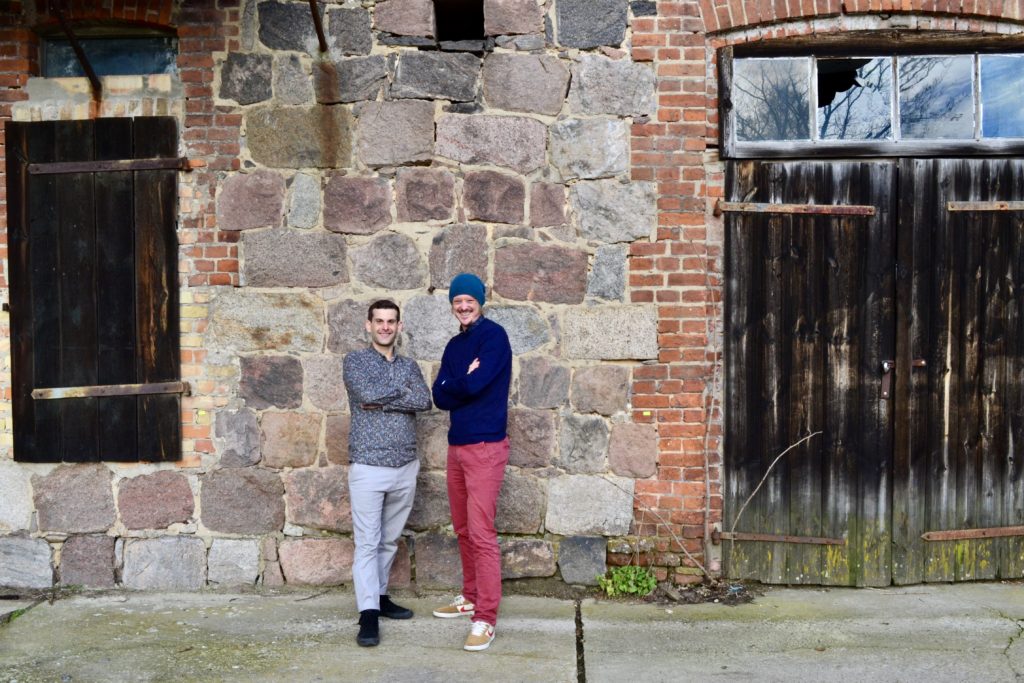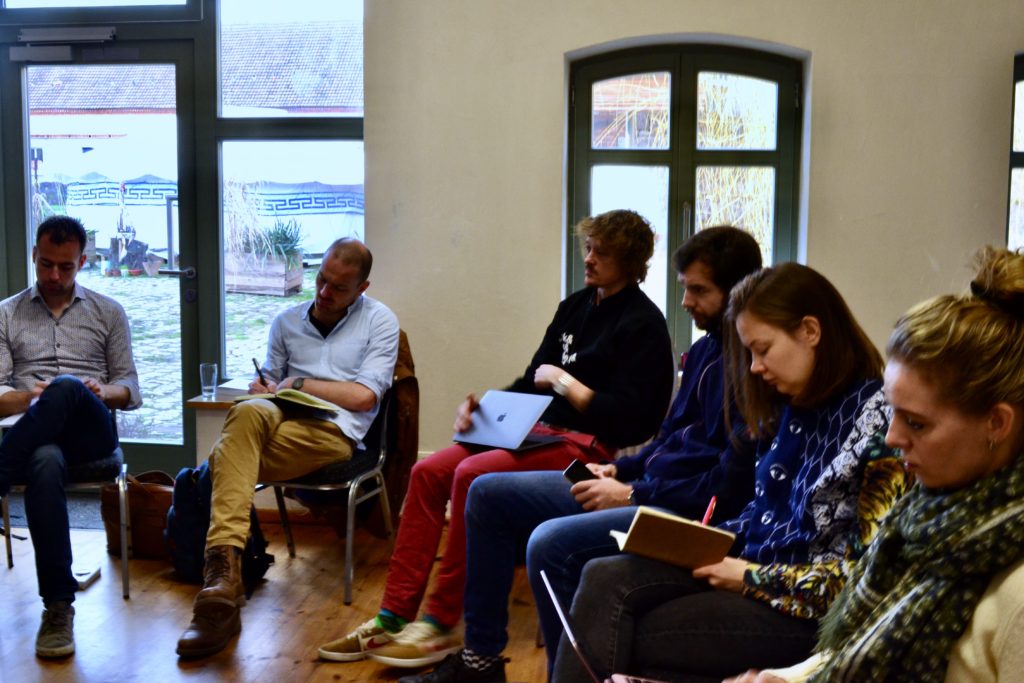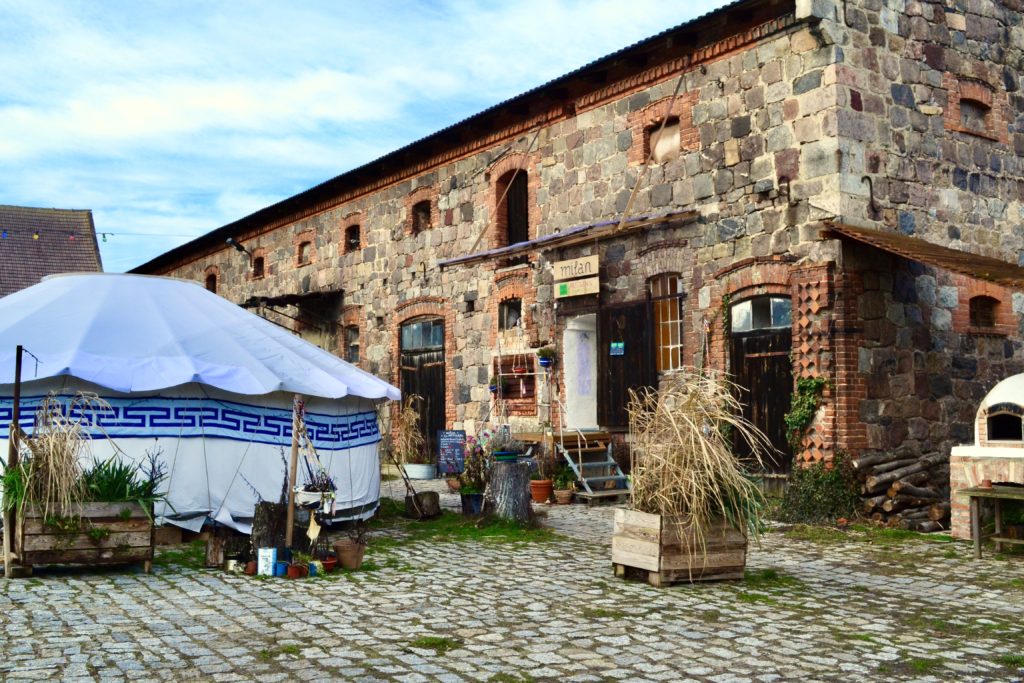To start off this new cycle and decade we headed over to Coconat last weekend to take part in the first ever Coliving Hub Mastermind. This coliving mastermind took place over two days with a few existing rural and urban coliving operators and some aspiring operators aiming to push the boundaries of innovation. Our co-founder Matt Lesniak also helped facilitate a session on how to incorporate social value into ground-up coliving developments. Below is a brief recap of the event and some inspiring quotes / insights from the weekend!
The participants of the Mastermind included Jacob Shapiro and Taylor Post from Outpost Club, Fanny Caloz from Swiss Escape, Christian Schmitz of Salto Systems Systems and a few aspiring coliving operators who come from a range of backgrounds and concepts such as hostel management (Lyuba Sorokina from Soul Kitchen Hostel), senior coliving (Ruth van Dijken of Blending Bricks), family coliving (Bart Swinnen of Unsame Life), coliving booking platforms (Jiri Opletal from Cowork Booking) and sustainable rural coliving projects (Csaba Antal of Portus Home and Hendirk Homann). Coconat founders Julianne Becker and Janosch Dietrich also stopped by to share their learnings of launching and operating Coconat over the past few years.
The Mastermind was facilitated by one of Coconat’s Galaxy Managers (their version of a GM), Marlies Stegmann, who used the Canfield Method to facilitate the different workshops. The Canfield Method consists of giving each participant dedicated ‘focus times’ on specific challenges / questions / approaches they may need help with. You can find some of Jack Canfield’s tools and guided meditations here.
Over the weekend we explored three main subjects, including Coliving Operations, Coliving Community and Coliving Marketing, with a final open session to bring up some extra topics such as investing, events programming and tech platforms. We will break down the recap according to each of these sessions below.
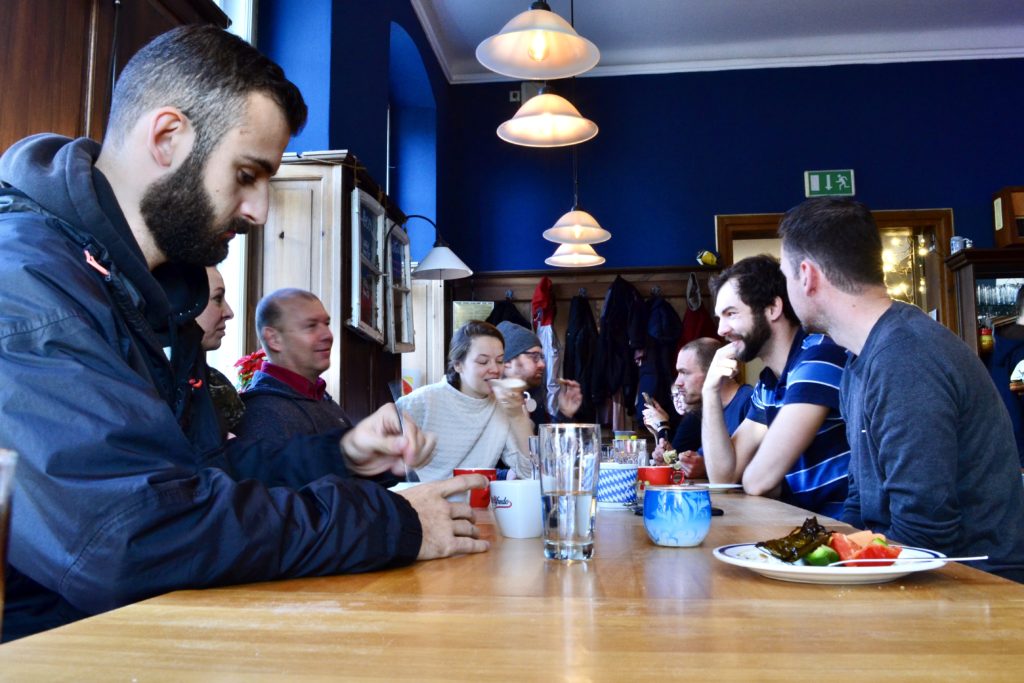
1) Operations – ‘Better Done Than Perfect’
The road to successfully operating a coliving space consists of clear expectation management, innovative organisational structures and efficient use of tech platforms. During this session we talked about each of these and got some examples from the current coliving and hostel operators at the Mastermind.
One suggestion from Marlies at Coconat was that it’s always ‘Better Done Than Perfect’. Instead of trying to have a perfect operational strategy or organisational structure, the road to successful management requires action and improvisation. Coconat now runs their space with a mixture of volunteering and paid staff, where they have a ‘Coliving Exchange’ that invites international volunteers to work up to 20 hours a week in exchange for meals and accommodation. Their paid staff includes 4 Galaxy Managers, cooks, cleaners and the cofounders.
We also explored the efficient use of Tech Platforms. One question was whether to use one coordinated property management software (i.e. Zendesk, Yorlet, Obeyo, Kndrd, The House Monk or Res:Harmonics) or whether it is more efficient to use several platforms. Some operators use a variety of platforms because it is what works best for them; they use tools such as Whoomies, Guesty, Hellorented, Asana, HelloSign, Stripe and Zapier to integrate the platforms together). Swiss Escape on the other hand just uses Wix which has an easy to use built-in CRM system.
True customer satisfaction comes when the quality (and reality) of your product and experience go far beyond the expectations of your residents.
The topic of expectation management came up as well, and one suggestion from Lyuba of Soul Kitchen Hostel was to underpromise and over deliver. She gave the example of the photos on their website which are of decent quality but don’t go overboard and then ultimately this leads to a ‘Wow Effect’ from guests when they arrive and they are surprised that the quality is even better than expected! True customer satisfaction comes when the quality (and reality) of your product and experience go far beyond the expectations of your residents.
2) Community – The Paradox of Community vs Convenience
From the birth of the coliving era, The Paradox of Community vs Convenience has been a cause of great struggle for coliving operators. Coliving operators have asked themselves: “How can we offer our residents quality services and amenities while at the same time receiving high levels of authentic engagement from them?”. Something we have noticed is that some coliving operators have too high of a service layer to their product (i.e. daily cleaning, top down events programming and 24/7 reception) which disincentivizes residents to take responsibility for the space. This creates a double edged sword scenario: the more service layers provided, the more residents put the responsibility of taking care of their home on the operator. One classic example that was brought up is kitchen cleaning: when residents rely on cleaners to clean the common areas (i.e. kitchens), sinks are filled with dishes and trash bins are not taken out.

We discussed this topic during the Mastermind and exchanged on how best to build and maintain community in a coliving space. We talked about introducing onboarding processes and an application form that requires potential residents to share how and why they would live communally with others. We also talked about creating a strong brand and culture that residents resonate with and want to engage with on the long term. For Matt’s presentation, he also mentioned different community building approaches inspired by this article by our good friend and partner Gui Perdrix on the ROI of Community. Gui defines coliving communities by their top down or bottom up approaches, and concludes that bottom up systems communities end up with decreased marketing and operational costs in the long term. So convenience and community are not mutually exclusive, but the appropriate systems and processes need to be implemented (i.e. strong onboarding, community facilitation training, cleaning rotations, nonviolent communication workshops, etc.) to enhance community experience and ultimately increase brand loyalty, NPS scores and customer retention.

We also talked about how to engage the local community into the coliving space. We spoke about that from both a rural and urban point of view, with Coconat giving examples of how they work with their region to organise artistic and family friendly festivals open to the local villages and how community groups can use their event spaces for elections, workshops and other multi-purpose usages. We also talked about how to engage with local communities from the start of a ground up new build in urban environments. We discussed different possible levels of engagement (see image below) and interacting with local communities through skill and resource sharing platforms such as Library of Things and Economy of Hours (timebanking economies).
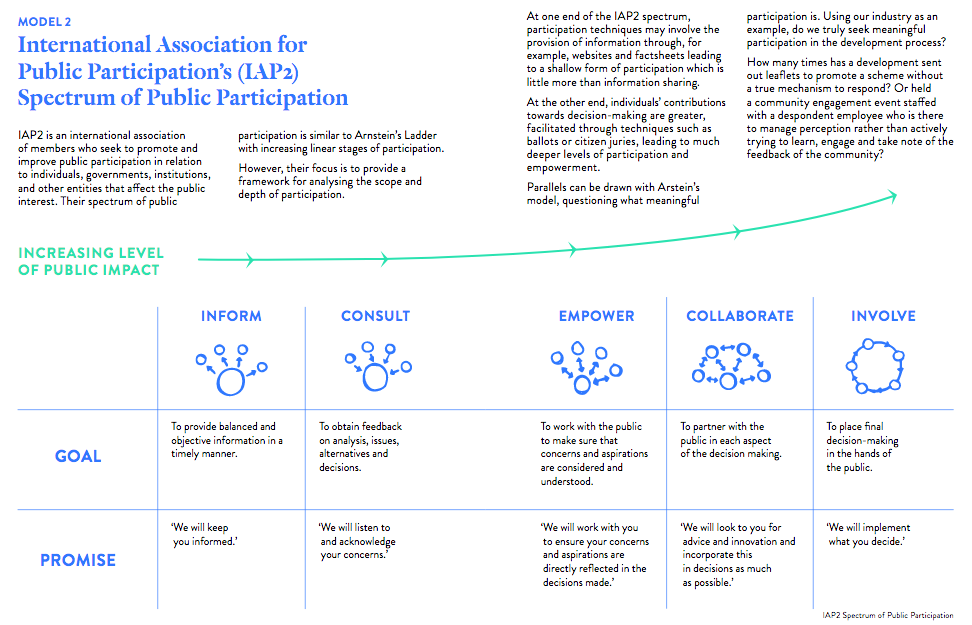
3) Marketing – Building and Selling a Thriving Coliving Brand
One of our final sessions was focused on branding, marketing and how to launch a successful coliving brand. We discussed different types of channels used to acquire leads, which events and conferences to attend to grow brand awareness and how to market to specific demographics such as students, seniors and young professionals. We shared different approaches to pre-launch marketing and which events to attend in order to grow your brand and build the right partnerships.
Some suggestions include SEO and social media strategies, especially in the pre-launch phase for building up your brand and getting your name out before having a space. One example is to create content such as blog articles and manuals regarding your specific niche. For example, to create a blog series or social media campaign around intergenerational coliving, similar to what Treehouse has done with their The LA Kind Project Instagram campaign. Or creating thought leadership content pieces like what Eco has done with the launch of their Lisbon Sustainable Guide. Both companies have done this before opening their spaces in order to create a buzz around their brand and to partner with aligned architects, events organizers and local community groups.
We also talked about what kinds of platforms to use and events to go to for marketing to potential clients. We talked about the risk of listing your coliving space on platforms such as Airbnb, Booking.com, Gumtree, Craigslist, Leboncoin and the likes. When listing coliving spaces on these platforms, operators have found that the customers from those sites have lower expectations about living in community and do not treat the space like the longer-term residents. This creates friction within the community experience and incoherence in terms of how residents treat the space and take responsibility for their home. Some platforms that were suggested – especially in terms of attracting digital nomads and remote workers for more destitational / rural coliving places – are NuMundo, Retreaters.com and Facebook groups like Digital Nomads Around the World and Digital Nomad Girls. Some events that were recommended for outreach and promoting brand awareness are the Co-Liv Summit, Global Coliving Conference, MIPIM, The Class of 2020 and Nomad Cruise.
One big insight was that sales / marketing / PR needs to align strongly with the actual in-house experience and product. Going back to expectation management, when sales and marketing don’t match the community experience (and under deliver), this creates tension between residents and staff and increases customer turnover. Under promise, over deliver…or set the bar higher and then invest more into community (with financial and human resources) and go above and beyond the actual expectations.
When sales and marketing don’t match the community experience (and under deliver), this creates tension between residents and staff and increases customer turnover.
Conclusion: Clear Expectations + Brand Transparency = Higher NPS
To recap, two of our main learnings over the weekend was ‘Better Done Than Perfect’ and ‘Expectation Management’, two concepts that are crucial for efficiently running your space and building community. With clear expectations around what kind of community is being built (i.e. top down vs. bottom up), the processes in place (onboarding, application process, community workshops) and the levels of engagement and boundaries from both staff and residents (be wary of community facilitator burnout!), you can efficiently manage your coliving community without having everything running ‘perfectly’. Clear expectation management leads to more trust between residents and staff and less tension when things go wrong. Residents are more likely to engage when they feel like you are being transparent as a coliving operator and customer satisfaction and retention goes up. Who knows, you may even inspire residents to clean their dishes and take out the trash! Jokes aside, this weekend was insightful, inspiring and fun, and may have ended with a sauna session and diving into the ice cold pond…
PS: Make sure to check out our upcoming coliving insights publications.
This article has been authored for you by:
Matt is responsible for designing community experience and impact strategies and measuring the social value of coliving communities. Matt is also a founding member and current Head of Community of Co-Liv and has worked for The Collective on their Impact Team.
